
Let’s get into the WAY WAY back machine. We’re talking back to the dawn of Cinema. For many of our fans, old horror movies mean movies from the 1970s. We’d like you to consider going back a little further. Back to the early ages of the silver screen and give some of these all-time classics a watch. Films you might not be aware of, or ones that you know but haven’t actually watched. Don’t worry, we were in the same boat as you! No shame in that.
We have often referred to our current time as the New Golden Age of horror. Which inevitably begs the question… what was the first Golden Age? For that, The Scariest Things is looking to DEFINE what the eras of horror are. When did it start? When does it end? And what are the high points of the era? In podcast episodes XXII and XXV we set out to answer those questions and have compiled our Dead List of the Top 13 Films of the Golden Age of Horror.
The Golem: How He Came into the World (1920 Carl Boese, Paul Wegener)

There are actually a trilogy of Golem films that were produced in the Golden Age, in 1915 and 1920 and all feature the same actor, Paul Wegener (also the director) in the role of the Golem, with the curious “Dutch Boy” haircut. The 1915 Der Golem is considered a partially lost film and features sex and violence that would have been hard for American audiences to swallow. Alas, only six minutes of this film survive. And that is a better fate than the sequel The Golem and the Dancing Girl, which no longer exists at all! However, the world is fortunate to have a pristine 4K restored copy of the 1920 Golem: How He Came into The World available online for all to see.
The 1920 film was more widespread and was a 16th century period piece, where a Jewish Rabbi brings a clay automaton to life to protect the Jews of Prague from being forced from their homes with the oncoming Holy Roman Empire. The Golem is a success saving the neighborhood, but it’s all too good to last, and the golem goes on a destructive uncontrolled destructive rampage. Ah, portents of things to come! An unkillable, unthinking, being of destruction who shows up in a series to kill and destroy? Hmmm… this is a formula that just might work.
Cabinet of Dr. Caligari (1920, Robert Weine)

Even if you haven’t seen The Cabinet of Dr. Caligari, you’ve seen The Cabinet of Dr. Caligari. The peak of German expressionism, this stylish film is the story of an insane hypnotist who sets up shop a the town fair and uses a somnambulist (sleepwalker) to commit murder. This movie still startles to this day, the makeup, lighting, and production design combined for a garish reality.
Shadows are stretched to their extremes. Perspectives and angles are warped to fool the eye and to heighten the drama. It is not just a film, this is modern art with violence. This was black-and-white madness on the big screen, and it gave audiences something they’d never seen before.
Häxan (1922, Benjamin Christiansen)
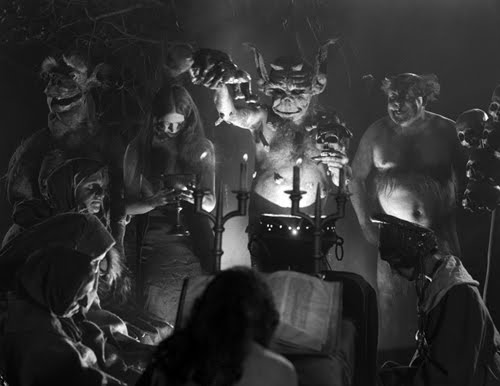
Call the censor! Häxan, or Witchcraft Through the Ages, is a silent film production that uses documentary and narrative styles to examines the history of superstitious practices that contribute to the persecution of women believed to be practicing witchcraft. This movie provided everything that was tabboo for the masses: depictions of Satan, naked women, orgies, torture, enraptured nuns, and forbidden rituals.
It was black-listed from the get go, not allowed into the US at the time. The Swedish film has been preserved and the copy eventually made its way to American audiences in the 1960s, where it became trippy and emblematic of the counter culture pushback. It is so visually stunning that it remains a compelling and influential work to this day, not surprisingly due to the depictions of Satan, naked women… you get the point. It was a movie from the beginning of the 20th Century, destined for a grindhouse exploitation moment.
The Phantom of the Opera (1925, Rupert Julian)
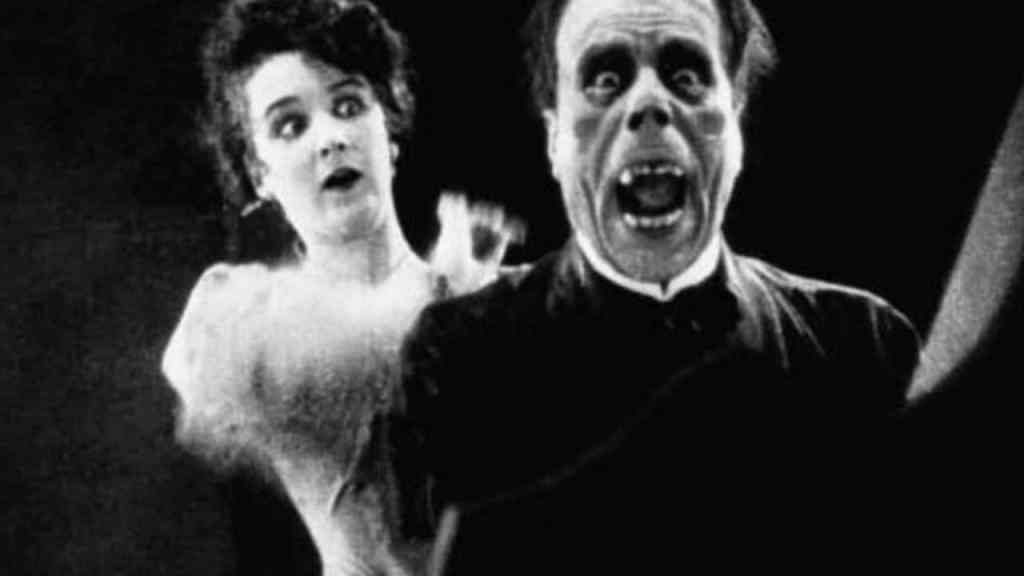
Lon Chaney stars as the Phantom who haunts the Paris opera house and falls for budding starlet Christine demanding she perform the lead in the production of Faust and threatening to curse the performance if his demands are not met. Lon Chaney’s extreme makeup was a physical ordeal, and it paid off. He kept that visage of death a secret up until the shoot, so his co-star Mary Philbin’s reaction is completely authentic.
This movie had so many revisions, it’s hard to keep track of what makes the definitive version. The original was four hours long, which proved too long for most audiences. They attempted adding humor into the film with comic relief, but that version drew boos from the intended audience. And, there was an attempt to do a “talkie” version. Fortunately, the Kino version, which is what you will see today, tightened up the edit and gave us the drama we know and love. It was a huge hit for Universal, grossing over $2 million in ’20s, a huge box office take. You won’t find any showtunes in this version of The Phantom of the Opera, but if you dare peak behind the mask what you will find is a horror classic.
Nosferatu (1922, F.W. Murnau)
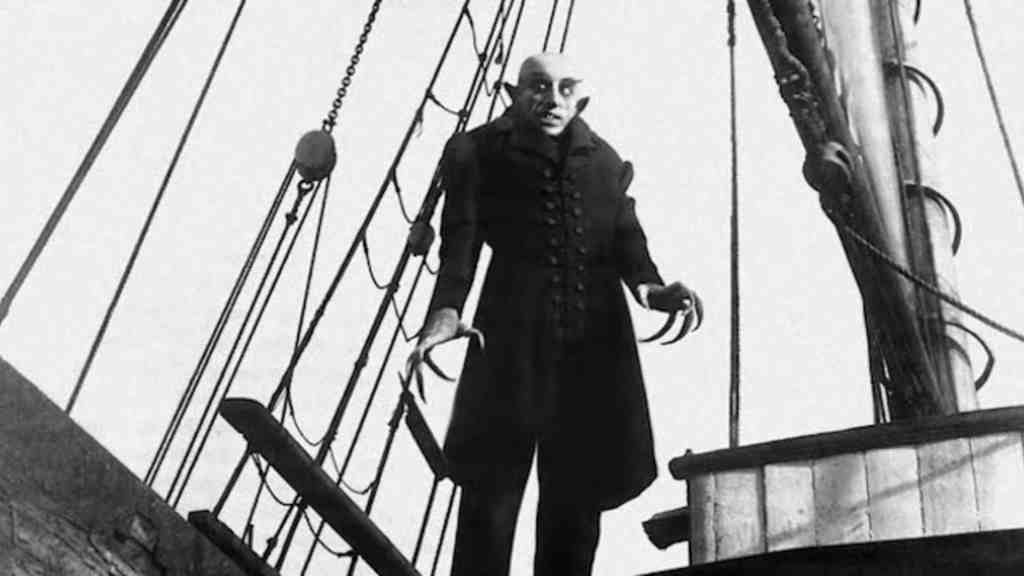
In the worst episode of House Hunters ever, Thomas Hutter, a Transylvanian real estate agent, begins to suspect that his latest client Count Orlock is a creature of the night. Nosferatu wanted to use Count Dracula, but Universal had other plans for that title, but the story captures much of the vampire tropes we know today. Director F.W. Murnau eschewed the sophisticated vampire, and instead went for the full ghoul version, and as such, it remains a scarier film than Dracula’s more elegant take on the same subject. Famously dramatized by Max Schreck, Nosferatu’s Count Orlock is one of horror’s most recognizable icons and the film’s legacy is still felt today.
You should watch this with Shadow of the Vampire, which stars Willem Dafoe as the truly bizarre persona that was Max Schreck.
Frankenstein (1931, James Whale)

It’s Alive! That is surely what Universal Studios must have been thinking when following the success of Dracula the studio quickly set about to release more horror films, The second in what world come to be known as the Universal Monster franchise, Frankenstein stars Boris Karloff as the creature made from a compilation of corpses (including the brain of a criminal) and animated during a lightning storm by Dr. Victor Frankenstein based on Mary Shelley’s classic tale.
Of all the classic Universal monsters, Frankenstein’s monster holds up the best to modern scrutiny. Karloff gave us a sad and sympathetic creature, a monster that couldn’t control himself, but was a victim of circumstance. The true monster really is Colin Clive’s Dr. Frankenstein. And, yet, the monster was powerful, and like an abused dog provoked, if you keep hitting that thing with torches, he’s going to wreck some house. (And he should! Go monster go!) This movie is a house upon which the horror tropes were built on. Get your pitchforks and torches! We’re going to have ourselves a murder party.
Dr. Jekyll and Mr. Hyde (1931, Rouben Mamoulian)
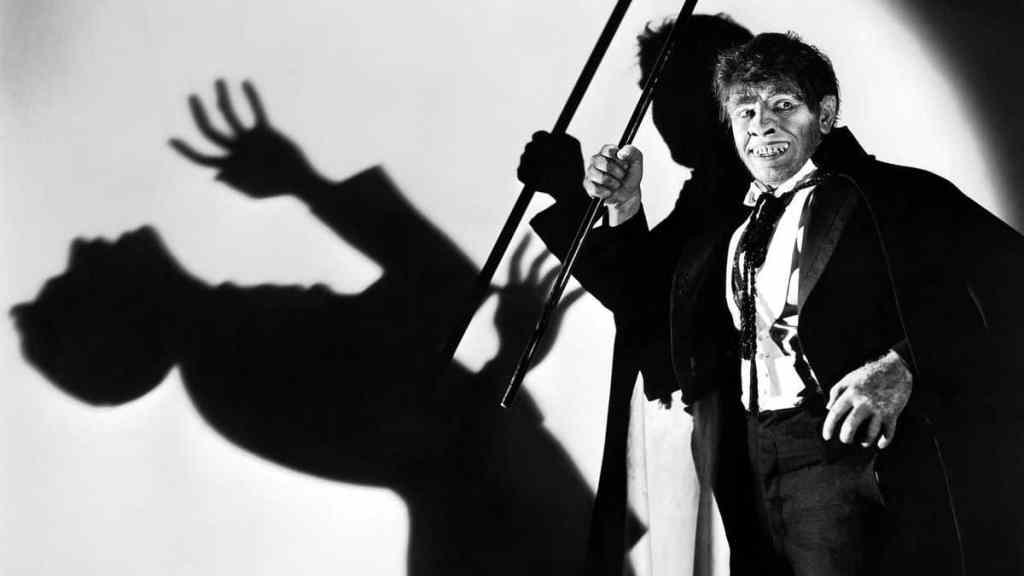
Fredric March stars as the titular characters in this Academy Award winning film about a scientist who turns into a homicidal maniac after ingesting a potion to unleash his evil side. March is the first, and one of only TWO actors to win a Best Actor award for a Horror movie. (The other being Anthony Hopkins for Silence of the Lambs.)
Remember, back in the 1930’s chemistry was the cutting edge of science. Modern medicine was in its infancy, and psychology was also new to the scene. Dr. Jekyll and Mr. Hyde taps into all of these ideas to develop a terrific mad-scientist tale. Dr. Jekyll is the intelligent superego, the rational man with lofty goals and sheer brilliance. Mr. Hyde is all feral id. Savage, impulsive, and profane. The visual effects transformation from one to the other is still a terrific change, but it’s the acting that sells this movie. March hits all his marks and it really feels like two completely different characters, and it is wholly convincing.
Freaks (1932, Tod Browning)
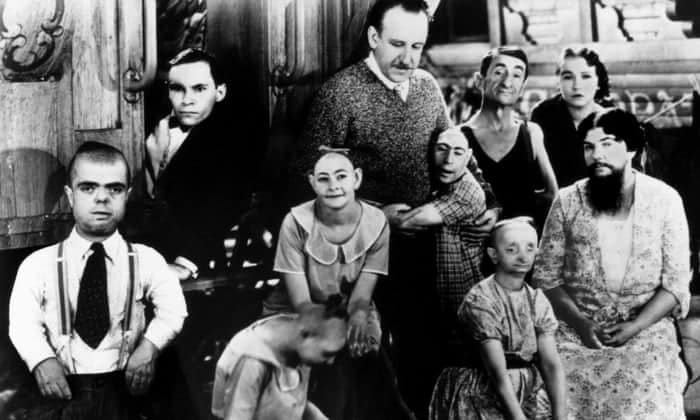
Tod Browning’s Freaks, the story of a trapeze artist who joins a sideshow carnival and sets her sights on seducing and murdering a dwarf to take his money. Controversial from its release because the actors have real disabilities and many considered it to have no value except to exploit, this movie effectively ended Browning’s career, which is a shame, as he brought two of the most important horror films of all time to the screen, with this and Dracula.
Like the aforementioned Frankenstein, Freaks asks you to sympathize with the circus performers, and the true villain of the movie is the pretty and manipulative Venus, (Leila Hyams). When we look back at this film, and question how it treats its subject material, look at the image above, with one of the circus performers embracing Tod Browning. This was their sole opportunity to be on the big screen, and despite the public outcry at the time, these performers were portrayed with a touch that was rare for the era. All that said, this film still shocks audiences today, begging them to become “One of US! One of US!”.
The Island of Lost Souls (1932, Erle C. Kenton)

“You! You made us in the house of pain! You made us… things! Not men! Not beasts! Part man… part beast! Things!”
The Sayer of the Law (Bela Lugosi)
The first “talkie” adaptation of H.G. Wells‘ The Island of Dr. Moreau, The Island of Lost Souls refers to the site where mad scientist Moreau works to excel evolution in plants and animals to transform them into humans…what could go wrong?
The Island of Lost souls takes the mad scientist to one of his favorite places, where he gets to play God. And Charles Laughton is excellent at playing God, or, well… Doctor Moreau. His pomposity and bravado radiates throughout the film. Equally fun was this was an era where you could advertise “Starring…The Panther Woman!” and make that sound both exotic and enticing. The Panther Woman, in this case, being Kathleen Burke in a campy and feline exercise. This movie also features an all-time great mob justice moment, and God gets his comeuppance. Highly entertaining, and it maintains its fantastic flair to this day.
The Ghoul (1933, T. Hayes Hunter)
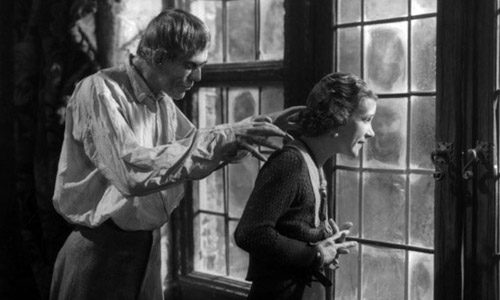
After his tomb is violated and Egyptologist returns from the grave to seek revenge! This is one of Boris Karloff’s less well-known roles, but it uses some familiar tropes of his previous films. An ancient Egyptian curse. A manservant lackey. A lost artifact of great power. Remember, this was an era that was caught up in Tutenkhamun-mania. The discovery of his tomb in 1922 was all the rage, and it was infused with mystery and tainted by thoughts of the ancient dead combined with fabulous wealth.
Universal capitalized on this craze, first with the more famous The Mummy (1932), and then Gaumont British followed with The Ghoul, both starring Karloff, now a major box office draw. While The Ghoul did not have the fantastic Jack Pierce makeup effects that The Mummy had, it made up for it in better pacing and action and infused the film with a bit more adventure. This film did not perform nearly as well at the box office as its American sibling and was soon forgotten. It was considered a lost film for decades until a copy of it was found in Shepperton Studios in 1980. If you are a Golden Age completionist, check out The Ghoul.
The Wolf Man (1941, George Waggner)
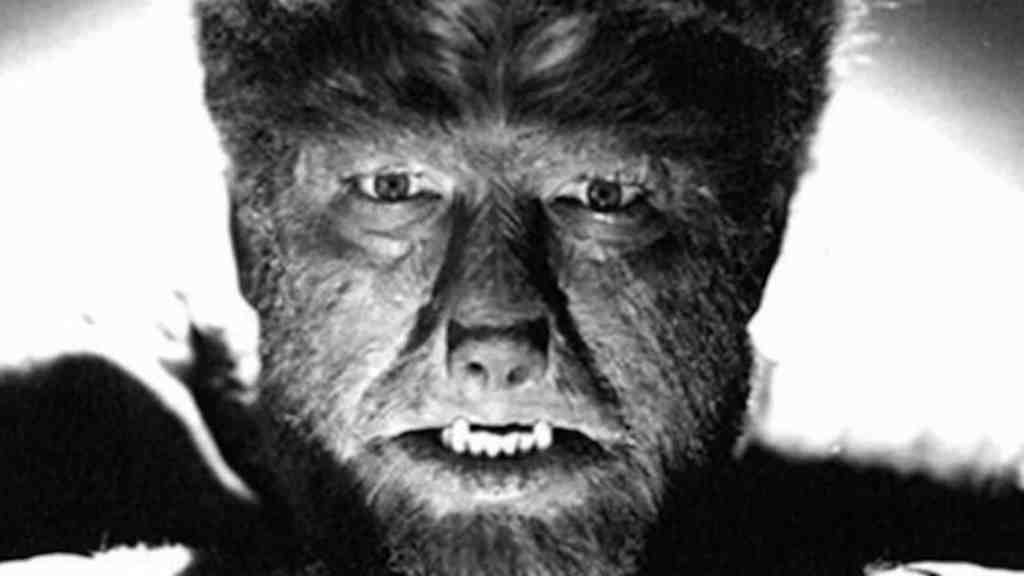
Golden Age stars Lon Chaney Jr. and Bela Lugosi both appear in this film, a dramatization of lupine transformation after a wolf attack with legendary Jack Pierce makeup effects that still holds a Rotten Tomatoes rating of 90%!
The transformation sequence of Lon Chaney into the titular character is one of the great cinema special effects sequences of all time. Not until Rick Baker topped it in 1981 with his American Werewolf in London prosthetic practical effects would we see such a magical moment. But it wasn’t all about the makeup. Chaney was magnificent and feral in his portrayal of the accursed creature. And the design and execution of the foggy and dreadful forest was powerful in setting the spooky environment. It looked amazing then, and it remains one of the great horror settings of all time. And, par for the course with Universal monster movies, it comes with a wry and bittersweet ending.
Cat People (1942, Jacques Tourneur)
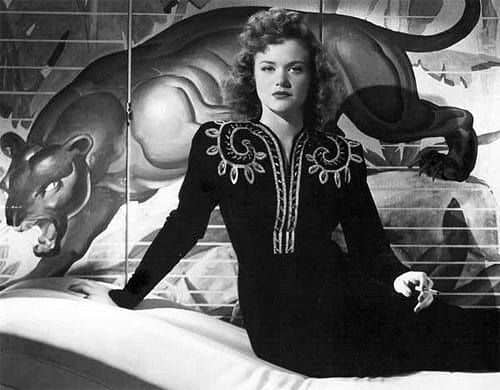
Directed by Jacque Tourneau with legendary RKO producer Val Lewton (the Jason Blum of the Golden Age), Cat People is the story of a Irena, a fashion designer who is the descendant of ancient Serbian cat people. She falls in love with a marine engineer but harbors a dark secret that prevents her from intimacy, for fear of her ancient curse. This movie was produced fully in the era of the Hayes Code, which tried to put the clamps on sex and violence in the movies. Movies like Freaks, Safe in Hell, and The Public Enemy ran headlong into the prudishness of the 1930s moral sensibilities, and the censor clamps had been put down.
Enter Cat People. Few films before or since have been able to suggest more with the old sex and violence, without showing sex or violence than this film. Central to the movie is the powerhouse seductiveness of the lead, Simone Simon whose feline presence was pure syrupy seductiveness. Her fears that when she was in love she would revert to a great leopard was shrouded in the wink and nod. Yes, we know what was going on, even if the sensors didn’t want you to know. Nastassja Kinski was able to more explicitly explain it to audiences in the 1982 worth reboot, and we highly recommend you see both of these two classic films back to back.
I Walked with a Zombie (1943, Jacques Tourneur)
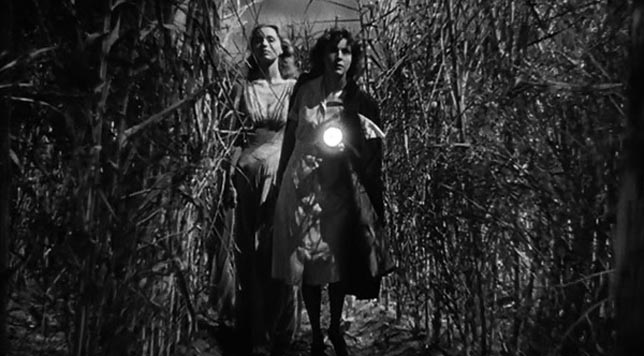
Another Tourneur/ Lewton collaboration, I Walked with a Zombie is a tale of love, voodoo, and horror. Betsy Connell (Frances Dee), a Canadian nurse has been sent to take care of Jessica (Christine Gordon), the wife of a Caribbean sugar plantation owner, but there is something much more sinister going on with Jessica than meets the surface. Here is the mother of all Zombie films, back when zombies were still referenced to their Caribbean roots. Like Cat People, this film would push the Hayes code to its stretching point. Note that if the code did not approve of films during the 1940s, that usually meant death at the box office.
Now, don’t go into this movie expecting flesh-eating decaying undead. The titular zombie in this film is a voodoo cursed woman in the middle of a brotherly love triangle, rendered somewhere between life and death, and without a will of her own. Like all of the Tourneur and Lewton collaborations, this is a highly intelligent and well-crafted story. It doesn’t show all its cards, and it plays squarely in the morally ambiguous grey zone. One important aspect of this film is that all of the most important characters are women. Dee, Gordon, and Edith Barrett all shine in this surprisingly feminist movie.

